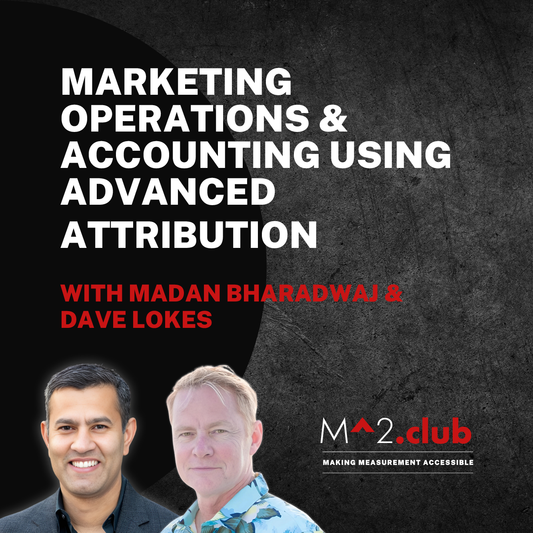Marketing Mix Model
Agile approach to marketing mix modeling to deliver results in weeks, not months. Understand impact on cross channel media investments, non-media factors and econometric variables on business KPIs and true ROI of media investments.

You may also like
-
Advanced Attribution Foundations
Embark on a journey with Madan Bharadwaj as he offers a captivating exploration of the evolving landscape of marketing attribution.
Regular price $99 USDRegular priceUnit price / per -
Data Infrastructure In Advanced Attribution
Your marketing data infrastructure is an important factor in obtaining reliable attribution results. Dive into this course to explore the crucial considerations for storing and processing your marketing data.
Regular price $29 USDRegular priceUnit price / per -
Marketing Mix Modeling - Theory & Practice
This course offers a comprehensive exploration of marketing mix modeling, covering its historical context, data organization, model design, and result interpretation.
Regular price $149 USDRegular priceUnit price / per -
Incrementality Testing For CRM Audiences: A Practitioners Guide
A panel of marketing experts and practioners discuss practical ways to unlock the value of your first party data.
Regular price $149 USDRegular priceUnit price / per -
Geo Match Market Incrementality Testing: A Practitioners Guide
A valuable resource for marketing professionals seeking to enhance their understanding and proficiency in assessing the incremental impact of geo-targeted marketing campaigns.
Regular price $149 USDRegular priceUnit price / per -
Marketing Operations and Accounting using Advanced Attribution
Learn how to prepare datasets for various advanced attribution needs. Typical Measurement infrastructure in data-forward brands and Marketing Accounting.
Regular price $29 USDRegular priceUnit price / per -
Statistics for Media Experiments
Professor Palaniappan Ramu provides an overview of the most widely used nomenclatures, metrics, and methods in the field, equipping you with the knowledge to excel in media experimentation.
Regular price $149 USDRegular priceUnit price / per -
Geo Spatial Analysis
This course gives an introduction to Geospatial Census data for marketing and a real-life Case Study on Zip-level testing using Facebook Reach & Frequency campaigns.
Regular price $29 USDRegular priceUnit price / per -
Optimizing Digital Campaigns With Advanced Attribution - Facebook/Search/OTT
Follow along with Allison Lichtenberg as she provides practical examples of applying advanced attribution insights to optimize your campaign strategies.
Regular price $99 USDRegular priceUnit price / per -
Testing for Diminishing Returns - Using Geo & Split Testing
Discover how Geo & Split testing techniques can uncover valuable growth opportunities for your business.
Regular price $149 USDRegular priceUnit price / per -
How do you communicate marketing contribution to executive team
Communicating marketing contribution effectively to executive teams, operations teams, and the board requires tailoring your message to each audience's interests and priorities. Experts Keary Phillips and Laura Joukovski share their experience with June masterclass cohort
Regular price $0 USDRegular priceUnit price / per -
CMO's playbook for managing CFO's by Keary Phillips
Our experts share their learnings and experience about how CMOs can effectively manage their relationship with CFOs, ensuring that marketing initiatives are understood, supported, and valued within the organization.
Regular price $0 USDRegular priceUnit price / per -
Attribution Foundations 2.0
Embark on a journey with Madan Bharadwaj as he offers a captivating exploration of the evolving landscape of marketing attribution with the content from the latest masterclass.
Regular price $99 USDRegular priceUnit price / per -
Role of Consumer Insights in Brand Measurement
David Yin, talks about the role of consumer insights in marketing measurement and how it addresses some biggest challenges that come out of the conversations about MMMs like, why is this happening? What is going on? Why did this stop working when it used to work before?
Regular price $49 USDRegular priceUnit price / per -
Marketing Accounting Frameworks - Jun 2024
Marketing Accounting Frameworks is a comprehensive course designed to equip you with the tools and knowledge to shape advanced attribution strategies. Through expert instruction and practical demonstrations, you'll learn how to measure marketing effectiveness, make data-driven decisions, and communicate the value of marketing to your organization.
Regular price $99 USDRegular priceUnit price / per
















